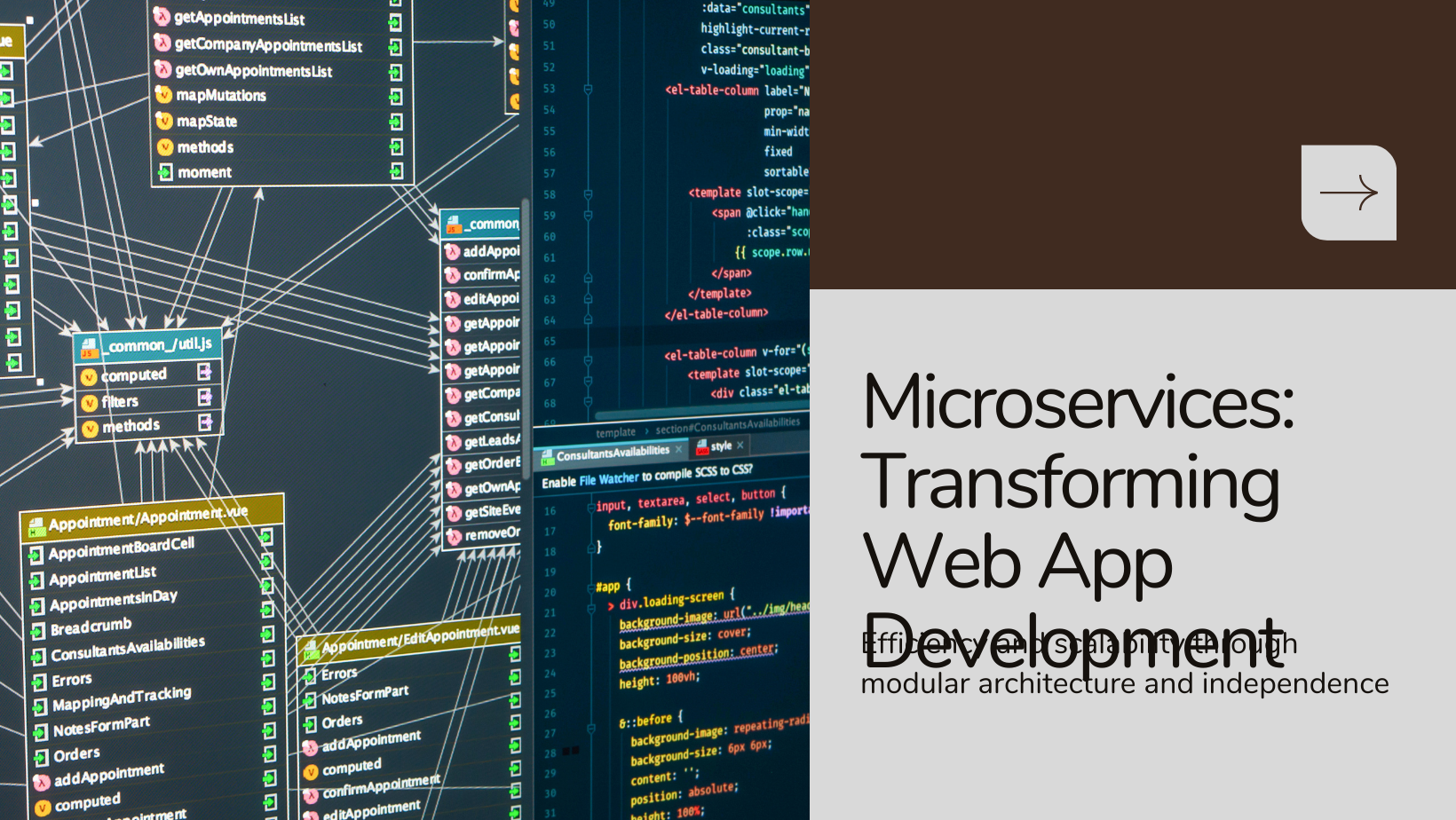In today’s fast-paced digital landscape, the development of robust, scalable, and efficient web applications is more critical than ever. Businesses need to adapt quickly to changing market demands, ensuring their applications are not only functional but also flexible enough to integrate new features without disrupting existing services. This is where microservices come into play. Microservices architecture has revolutionized web app development, offering a myriad of benefits that streamline processes and enhance the overall performance of applications.
What Are Microservices?
Microservices, also known as the microservices architecture, is a design approach where a single application is composed of loosely coupled, independently deployable smaller services. Each of these services focuses on a specific business functionality and communicates with other services through well-defined APIs. This contrasts with traditional monolithic architecture, where an application is built as a single, cohesive unit.
Advantages of Microservices in Web App Development
1. Scalability
One of the most significant advantages of microservices is scalability. Since each service operates independently, developers can scale specific components of an application as needed without scaling the entire app. This means that if a particular service experiences a surge in demand, additional instances of that service can be deployed to handle the load, ensuring smooth performance.
2. Flexibility in Technology Stack
Microservices allow developers to choose the best tool or technology for each service based on its requirements. Unlike monolithic applications, where the entire application must use a single technology stack, microservices enable the use of different programming languages, databases, and frameworks for different services. This flexibility ensures that each part of the application is optimized for performance and maintainability.
3. Improved Fault Isolation
In a microservices architecture, if one service fails, it does not necessarily mean the entire application will go down. Fault isolation ensures that issues within a single service do not cascade and affect the rest of the application. This improves the reliability and robustness of the application, as other services can continue to function normally while the faulty service is being fixed.
4. Continuous Delivery and Deployment
Microservices support continuous delivery and deployment, allowing developers to release new features and updates more frequently. Since each service is independently deployable, teams can deploy changes to specific services without redeploying the entire application. This reduces deployment time, minimizes risk, and enables faster time-to-market for new features.
5. Enhanced Maintainability and Modularity
Microservices promote modularity, making it easier to manage and maintain the codebase. Smaller, well-defined services are easier to understand, test, and debug. This modularity also facilitates better collaboration among development teams, as each team can take ownership of specific services, leading to more efficient and organized development processes.
Implementing Microservices in Web App Development
While the benefits of microservices are clear, implementing this architecture requires careful planning and consideration. Here are some essential steps to ensure a successful transition to microservices.
1. Define Service Boundaries
Identifying the right boundaries for each service is crucial. Services should be designed around business capabilities, with each service focusing on a specific functionality. This approach ensures that services are cohesive and loosely coupled, making them easier to develop, test, and deploy.
2. Adopt API-First Design
Microservices communicate with each other through APIs. Adopting an API-first design ensures that services are designed with clear and well-defined interfaces from the beginning. This approach promotes better integration and reduces the likelihood of issues arising from incompatible interfaces.
3. Implement a Robust DevOps Strategy
A successful microservices architecture relies heavily on automation and DevOps practices. Continuous integration and continuous deployment (CI/CD) pipelines are essential for automating the build, test, and deployment processes. Implementing robust monitoring and logging tools is also critical for tracking the health and performance of each service.
4. Embrace Containerization
Containerization technologies like Docker and Kubernetes are integral to microservices architecture. Containers provide a lightweight and consistent environment for deploying services, ensuring that they run reliably across different environments. Kubernetes, in particular, offers powerful orchestration capabilities, automating the deployment, scaling, and management of containerized applications.
5. Ensure Data Management Strategies
In a microservices architecture, each service may have its own database, leading to challenges in data consistency and management. Implementing effective data management strategies, such as event-driven architecture and eventual consistency, is crucial to ensure that data remains accurate and consistent across services.
Challenges of Microservices
While microservices offer numerous advantages, they also come with their own set of challenges. Understanding and addressing these challenges is essential for a successful implementation.
1. Increased Complexity
The decomposition of a monolithic application into multiple microservices introduces complexity in terms of communication and coordination. Developers must manage inter-service communication, handle data consistency, and implement mechanisms for service discovery and load balancing.
2. Network Latency and Performance
Microservices communicate over the network, which can introduce latency and affect performance. Ensuring efficient communication and minimizing network overhead are critical to maintaining the performance of a microservices-based application.
3. Testing and Debugging
Testing and debugging microservices can be more challenging compared to monolithic applications. Each service must be tested independently, and integration testing becomes crucial to ensure that services work together as expected. Implementing comprehensive logging and monitoring is essential for effective debugging.
4. Data Management
Managing data consistency across multiple services can be complex. Developers must implement strategies for data synchronization and handle scenarios where data may be distributed across different services. This requires careful planning and consideration of eventual consistency models.
5. Organizational Alignment
Transitioning to a microservices architecture often requires changes in organizational structure and processes. Development teams must be aligned with the new architecture, and collaboration between teams becomes critical. Adopting a DevOps culture and fostering cross-functional collaboration are essential for success.
Case Studies: Success with Microservices
Several prominent companies have successfully adopted microservices architecture, demonstrating its effectiveness in real-world scenarios.
Netflix
Netflix is a prime example of a company that transformed its architecture using microservices. Faced with the challenges of scaling its streaming service to millions of users, Netflix transitioned from a monolithic application to a microservices architecture. This enabled the company to scale its services independently, improve fault isolation, and accelerate the delivery of new features.
Amazon
Amazon also embraced microservices to manage its vast and complex e-commerce platform. By breaking down its monolithic application into smaller services, Amazon achieved greater flexibility, improved scalability, and enhanced resilience. This allowed the company to innovate rapidly and deliver a seamless shopping experience to its customers.
Uber
Uber leveraged microservices to handle the complexity of its ride-sharing platform. With services like driver management, passenger management, and trip calculation operating independently, Uber achieved better scalability and fault tolerance. This modular approach enabled the company to expand its services and adapt to changing market demands efficiently.
Conclusion
Microservices architecture has become a cornerstone of modern web app development, offering unparalleled scalability, flexibility, and resilience. By breaking down applications into smaller, independently deployable services, businesses can respond more effectively to changing market conditions and deliver new features faster. However, implementing microservices requires careful planning, robust DevOps practices, and effective data management strategies.
Despite the challenges, the benefits of microservices far outweigh the drawbacks, making it a powerful approach for building high-performance web applications. As more organizations embrace this architecture, the future of web app development will undoubtedly be shaped by the principles of microservices, driving innovation and enhancing the digital experiences of users worldwide.






